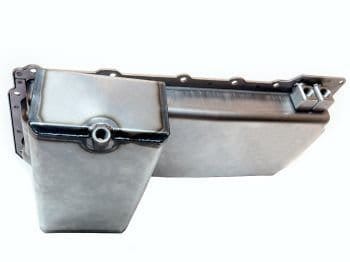The LS engine family has garnered extraordinary acclaim within the automotive community, primarily due to its versatility and performance. When delving into the world of LS swaps and builds, one component often overlooked is the oil pan. The LS front sump oil pan is a pivotal element that not only impacts your engine’s efficiency but also influences the vehicle’s overall performance. Let’s embark on an exploration of this essential component, understanding its varieties, applications, and the value it brings to your build.
To start, the LS engine architecture is fundamentally different from many traditional engines. With its unique oiling system and compact design, the oil pan must cater to these specifications. Enter the LS front sump oil pan. Its design serves a distinct purpose—correctly managing oil circulation and ensuring proper lubrication to the engine components, especially during high-performance situations. The intricacies of this oil pan often open a Pandora’s box of questions: What makes it different? How do I choose the right one? And what are the implications for my build?
Initially, it’s important to explore the anatomy of the LS front sump oil pan itself. Unlike traditional oil pans, the LS front sump design positions the oil reservoir at the front of the engine. This clever engineering allows for a more streamlined layout, which is especially beneficial when fitting into tight spaces, such as those found in smaller chassis or modified vehicles. Furthermore, the front sump configuration aids in the distribution of oil, ensuring that every engine bearing receives the necessary lubrication when the oil circulates.
When considering an LS front sump oil pan, an essential aspect is the material from which it is constructed. Oil pans can be made from aluminum or steel, with both materials presenting distinct advantages and drawbacks. Aluminum, for example, is lauded for its lightweight properties, contributing to an overall reduction in vehicle weight. Conversely, steel oil pans are more robust and can withstand harsher conditions. This dichotomy prompts car enthusiasts to ponder: Do you prioritize weight savings or resilience? Your decision will largely depend on the specific application of your vehicle, be it a track beast or a daily driver.
In the realm of oil pan options, size becomes an influential factor. Typically, front sump oil pans come in standard, deep, and even competition sizes. The standard size is sufficient for daily driving and mild performance upgrades. However, for those pushing their LS engines to the limit, a deep oil pan may provide the additional oil capacity necessary to reduce the risk of oil starvation during aggressive cornering or spirited driving. Competition oil pans take it a step further, featuring baffling systems and trap doors that solidify oil management under the most strenuous conditions. But are these enhancements truly necessary for your particular setup?
Another crucial consideration is the compatibility with your existing components. The LS front sump oil pan must harmonize with various aspects of your engine bay, including the chassis, steering mechanism, and exhaust system. For instance, when performing an LS swap in a vehicle originally designed for a different engine, you may encounter challenges with clearances and fitment. Ensuring that the selected oil pan aligns with your overall build requirements is imperative for success.
What about the aesthetic qualities of an LS front sump oil pan? While functionality reigns supreme, many enthusiasts appreciate the visual appeal of their engine bay. A polished aluminum oil pan can add a touch of elegance, elevating the overall impression of your engine. This creates a dichotomy between performance and aesthetics; how you strike this balance can influence your choice in an oil pan.
Moreover, we cannot overlook the significance of an oil pan’s design concerning lubrication technology. Advanced oil pans feature built-in windage trays and baffles to minimize oil slosh—a phenomenon that can detract from the effectiveness of oil circulation. As the engine revs and maneuvers through turns, these innovative designs play a critical role to ensure consistent lubrication to the engine’s vital components. Have you considered the potential performance enhancements offered by such designs?
Customization is also an avenue worth exploring. Some manufacturers allow modifications, enabling you to adapt oil pans to meet precise requirements. Custom oil pans can be fabricated to enhance fitment or performance metrics specific to your driving style. A bespoke oil pan might just be the golden ticket for maximizing your engine’s capabilities.
Finally, it’s essential to discuss maintenance and longevity. Regular checks on your oil pan will ensure that it remains leak-free and operational. Some enthusiasts might find themselves faced with repair decisions down the line. Will you opt for a simple repair, or will the oil pan’s integrity lead you to consider a full replacement? This thought process raises another question: How vital is the long-term performance and reliability of your engine to you?
In conclusion, understanding LS front sump oil pan options is not just about bolts and metal. It’s an exploration into the heart of engine performance, a consideration of materials, sizes, and designs that can dramatically impact your driving experience. From sleek aesthetics to critical engineering specifics, each choice lays a brick in the foundation of your automotive masterpiece. As you embark on this exciting journey, ponder the possibilities. What will you discover about the relationship between your oil pan and your engine’s potential?
